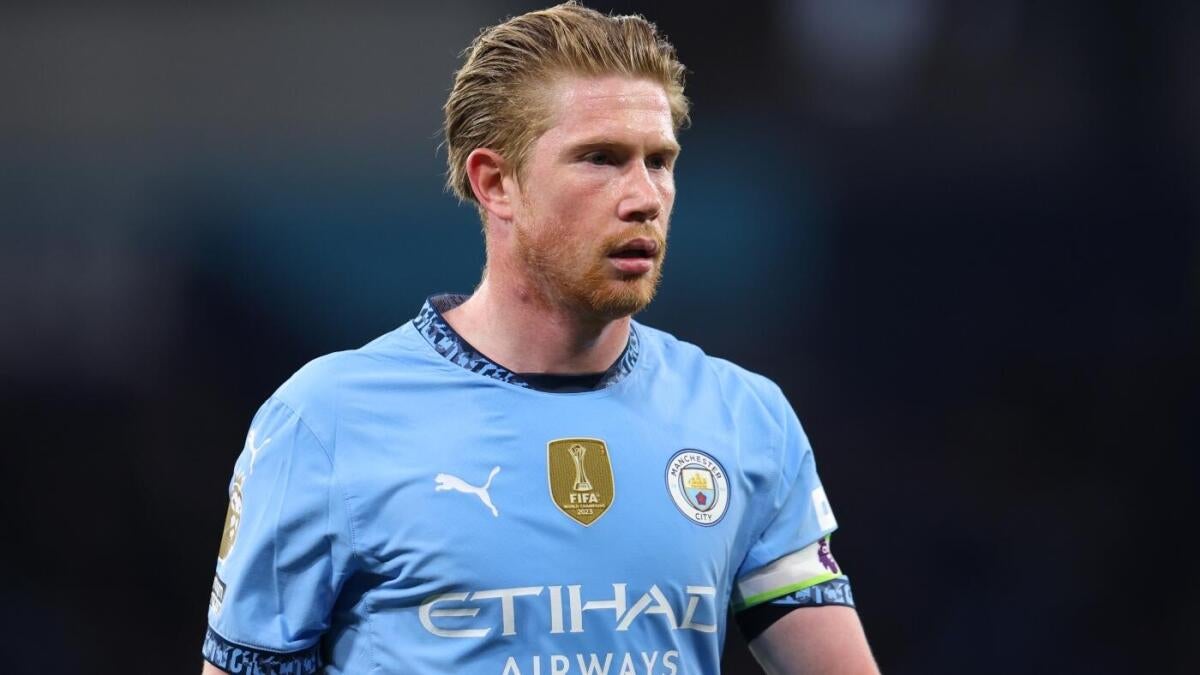The Kevin De Bruyne Transfer Saga: A Transformational Moment for MLS
Football’s transfer market rarely lacks drama, but few sagas carry the weight of Kevin De Bruyne’s potential move to Major League Soccer. The Belgian maestro, whose vision and precision have defined Manchester City’s golden era, now stands at the center of a transatlantic tug-of-war—with the Chicago Fire emerging as frontrunners. This isn’t just another transfer; it’s a litmus test for MLS’s ambition and a pivotal moment for a league no longer content to be a retirement destination for aging stars.
Why the Chicago Fire? More Than Just a Hail Mary
The Fire’s pursuit of De Bruyne isn’t speculative—it’s a calculated gamble with multiple factors tilting the odds in their favor.
Tactical Synergy Under Berhalter
Gregg Berhalter’s 4-3-3 system thrives on creative midfielders who can dictate tempo, a role De Bruyne has mastered at the highest level. Unlike other MLS teams that might shoehorn him into a rigid setup, the Fire’s structure mirrors Pep Guardiola’s philosophy—high possession, fluid interchanges, and reliance on midfield ingenuity. For a player wary of stylistic mismatches (see: Steven Gerrard’s MLS struggles), this alignment matters.
Financial Flexibility and DP Slots
While De Bruyne won’t eclipse Lionel Messi’s $20M+ salary, the Fire’s offer—reportedly between $8M-$15M—is competitive. Crucially, they have two Designated Player slots open, allowing room for additional marquee signings to build around him. Compare this to Inter Miami, already maxed out on DPs, and the Fire’s appeal grows.
The MLS Discovery Rights Wild Card
MLS’s opaque “discovery rights” rule, which grants teams exclusive negotiating windows for unregistered players, could tip the scales. The Fire reportedly filed a claim early, potentially blocking rivals like NYCFC or D.C. United. It’s a controversial mechanism, but in this case, it rewards proactive planning.
MLS’s Big Picture: From Retirement League to Global Player
De Bruyne’s arrival would signal MLS’s evolution into a league that attracts stars *before* their twilight years. Consider the ripple effects:
– Competitive Credibility: Unlike past high-profile signings (Beckham, Zlatan), De Bruyne would arrive as a Champions League-caliber player, not a post-peak icon. This shifts perceptions of MLS from “semi-retirement” to “legitimate next step.”
– Youth Development: His presence could accelerate the growth of young MLS talents. Imagine a 19-year-old Fire prospect learning to read the game alongside De Bruyne—an invaluable apprenticeship.
– Global Spotlight: Messi brought eyeballs; De Bruyne would bring legitimacy. Sponsors and broadcasters take notice when a player of his caliber chooses MLS over Saudi Arabia or Europe’s mid-tier leagues.
Manchester City’s Dilemma: End of an Era
For City, losing De Bruyne is more than a tactical headache—it’s symbolic. He’s been the architect of their dominance, with 98 assists and 67 goals in 8 seasons. Yet there’s a silver lining:
– Financial Prudence: Letting a 33-year-old leave on a free (his contract expires in 2025) avoids a risky long-term deal.
– Youth Integration: Phil Foden, Cole Palmer, or a new signing could inherit his mantle. Guardiola has never shied from reinvention.
Conclusion: A Transfer That Transcends the Pitch
De Bruyne to Chicago isn’t just about goals and assists—it’s about legacy. For MLS, it’s a chance to prove it can be a destination, not a footnote. For the Fire, it’s a statement of intent: no longer MLS’s sleeping giant, but a club ready to compete globally. And for De Bruyne? A final act where he’s not just a star, but a pioneer.
The saga isn’t over, but one thing’s clear: this is more than a transfer. It’s a turning point.











